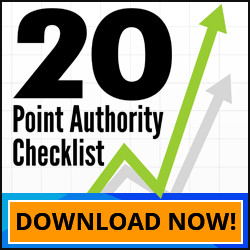 No Follow Tags And Their Impact On SEO
No Follow Tags And Their Impact On SEO
Proper use of the No Follow tag in your links can be more beneficial to you more than you may think. Ensuring that your website is indexed and crawled by the search engines properly should be a huge focus to anyone who wants to attract the right traffic to their site, however, there are still a large amount of webmasters who are still highly uncertain of what exactly the “no follow’ attribute does, and how it will benefit them. Let me clear some air for you…
1.What Is The No Follow Attribute?
Web Crawlers, otherwise known as bots and spiders, consistently search their indexes for content that can be reported back to base. (Let’s say, the Search Engines) When a crawler accesses your web page, it will take note of a few things. Here are just a few examples:
-The anchor text of the link that bought it to your page
-The keywords on your page
-What words are emphasized on your page
-The links on your site
So, naturally you would assume that crawlers travel using links. If you guessed that much, you are on the right path. Of course, when a crawler travels to your website, it will associate the anchor text of the link that it followed as being a relevant keyword to your page regardless of the content on the other end of that link, which is great if the keyword is actually related to your site, if it is not the case, then this is where the use of the no follow attribute comes in quite handy.
The no follow attribute works kind of like a locked gate system, when a crawler finds the link, it is not allowed to pass page rank back to that link. Let me demonstrate. If I were to look at coding a link manually, there is only one small addition that I would need to make to the original href link, being the insertion of the no follow tag. Here is an example of a no follow href link keeping in mind that the no follow tag is in bold:
<a href=http://www.domain.com/” rel=”nofollow”>ANCHOR TEXT</a>
Keep in mind that some blog software such as WordPress by default creates no follow tags for all user generated content such as comments, however this can be disabled as to encourage user participation using plugins such as DoFollow for WordPress, which I personally use for the blogs that I own. Plugins like these do need to be used responsibly though, as blogs that have removed the no follow tag on comments can attract high levels of spam.
2.Where Should I Use The No Follow Attribute?
There are many places where I can recommend using the no follow attribute on a website, the primary one that I recommend is your home page link, if the anchor text of that link is “home”. You wouldn’t want the search engines are thinking that the keyword “home” is associated to the home page of your fishing website, would you? Exactly!
There is also the problem where other category links may be using text that is either too long, or is not entirely the keyword that you would like to focus on. This is also where the no follow attribute can come in extremely handy, however, with every link that you choose to add this tag to, you will need to consider one important thing…
3.How Are My Pages Going To Be Indexed?
This takes some careful planning and imagination on your part. Personally, I prefer to put my raw keywords at the bottom of my website or blog without using the no follow tag, and link them directly to the categories that they relate to. Others use an intense network of links on pages that link to other pages that are driven by that keyword in anchor text, and there are many more other options out there.
The bottom line is that your page should always be optimized for the best possible results when crawled by the search engine spiders. Proper use of the no follow attribute is one of many techniques that can be used on page, but is also one of the most powerful.
Recent Melbourne SEO Services Blog Posts:

 No Follow Tags And Their Impact On SEO
No Follow Tags And Their Impact On SEO

Hey, This is good information and we follow this now thank you for sharing here we would like to know more if we can set no follow for specific keywords if anyone know here – Thanks
Thanks a lot for sharing such a nice information about the no follow tags and there impact on seo